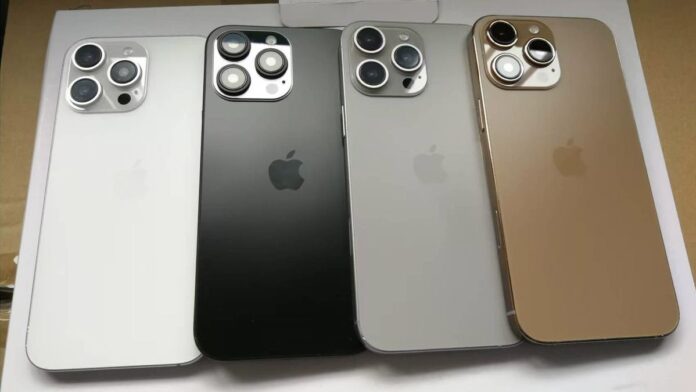Apple’s iPhone series has long stood at the forefront of smartphone innovation, and the launch of the iPhone 16 marks another significant milestone. Officially released during Apple’s much-anticipated “Glowtime” event, the iPhone 16 series includes four distinct models: iPhone 16, iPhone 16 Plus, iPhone 16 Pro, and iPhone 16 Pro Max. With major upgrades in processing power, camera systems, design, and artificial intelligence (AI), the iPhone 16 promises to redefine the user experience. This report delves into the key features, specifications, and advancements that distinguish the iPhone 16 from its predecessors.
1. Design and Display
Here’s what you need to know:

Apple has made several design changes to the iPhone 16 series, providing a more refined and functional aesthetic.
1.1 Design Improvements
The base models, iPhone 16 and iPhone 16 Plus, feature an aluminum frame with soft contoured edges similar to the iPhone 15 series. The Pro models, on the other hand, sport a titanium frame, making them more durable and lightweight compared to previous iterations. All models feature improved ergonomics, making them more comfortable to hold.
The iPhone 16 Pro models have reduced bezels, giving the devices the “thinnest borders” in the series’ history. Although this design enhancement marginally increases the size and weight, it adds to the visual appeal of the device and enhances screen real estate without compromising on comfort.
1.2 New Color Options
Apple offers new color palettes for the iPhone 16 series. The base models come in fresh colors such as Ultramarine (a shade of blue), Teal, Pink, White, and Black. The Pro models retain more sophisticated options with Black, White, Natural, and Desert Titanium finishes, lending a premium feel to the devices.
1.3 Larger Displays
A notable change in the Pro models is the larger display size. The iPhone 16 Pro now comes with a 6.3-inch display, while the iPhone 16 Pro Max features a 6.9-inch screen, making it one of the largest iPhones to date. The iPhone 16 and iPhone 16 Plus retain their 6.1-inch and 6.7-inch displays, respectively. Apple has upgraded the display to its second-generation Ceramic Shield glass, boasting 50% more toughness than the first generation and offering twice the durability of competing smartphone glass.
The Pro models also feature Super Retina XDR OLED displays with ProMotion technology, allowing for refresh rates up to 120Hz, which translates into smoother animations and video playback. The base models continue to use 60Hz displays, which are less responsive but still maintain Apple’s excellent OLED technology for vivid colors and sharp contrasts.
2. Camera Advancements
One of the most significant improvements in the iPhone 16 series is the camera system, particularly in the Pro models, which have been designed with professionals and creatives in mind.
2.1 Pro Camera Systems
The iPhone 16 Pro Max introduces a 5x optical zoom, up from the 3x zoom in the iPhone 15 Pro Max. This enhanced zoom capability allows for greater flexibility in photography, especially in capturing distant subjects without sacrificing image quality. The 48MP main camera sensor is retained across the Pro models, but the new sensor eliminates shutter lag, which improves the ability to capture moving subjects with precision. This upgrade is ideal for photographing pets, children, or any scenario with dynamic movement.
Additionally, the Pro models support 4K video recording at 120fps, enabling slow-motion recording in ultra-high-definition, a feature that will appeal to content creators and videographers. The devices also have four “studio-quality” microphones that can capture spatial audio, making them versatile tools for video production and immersive sound experiences.
2.2 Base Model Camera Enhancements
The base iPhone 16 and iPhone 16 Plus retain the 48MP main and 12MP ultrawide camera setup from the iPhone 15. However, the ultrawide sensor in the new iPhones has autofocus and supports macro photography, capturing 2.6 times more light for better performance in low-light environments. Spatial Video and Spatial Photo capture have been integrated, enabling users to create immersive media that can be viewed through Apple’s Vision Pro headset.
3. Performance: A18 Bionic Chip
The iPhone 16 series is powered by Apple’s latest generation of processors, offering unparalleled performance and efficiency.
3.1 A18 Processor
Both the iPhone 16 and iPhone 16 Plus come equipped with the A18 chip, which Apple claims is 30% faster than the A16 chip found in the iPhone 15. The new chip architecture promises a 40% increase in GPU performance, making the device ideal for gaming and graphics-intensive applications. The CPU also sees improvements, allowing the phone to handle AI tasks, gaming, and multitasking with ease.
3.2 A18 Pro in the iPhone 16 Pro Models
The iPhone 16 Pro and Pro Max models are powered by the A18 Pro chip, which is even more powerful than the A18. According to Apple, the A18 Pro chip delivers up to 22% faster performance than the A17 Pro, particularly in AI processing. This performance boost is especially important given Apple’s push toward integrating AI features deeply into the iPhone 16’s user experience. Whether it’s gaming, video editing, or running advanced AI applications, the A18 Pro is set to be a major selling point for tech enthusiasts and professionals alike.
4. AI Capabilities: Apple Intelligence
A standout feature of the iPhone 16 series is its integration of Apple’s new AI system, Apple Intelligence, which transforms the way users interact with their phones.
4.1 New AI Features
Apple Intelligence introduces several key features, including new writing tools that turn shorthand notes into fully written sentences, personalized AI emoji creation, and an innovative Image Playground app that generates images based on prompts. These tools cater to both casual users and professionals looking for more efficient content creation methods.
The AI system also brings improvements to photo organization and email management, with AI-generated summaries for emails and meeting notes, as well as location-based photo suggestions.
4.2 Enhanced Siri
Siri receives a major overhaul with Apple Intelligence, now capable of processing typed queries and recognizing content on the screen. For instance, users can ask Siri to play a song mentioned in a text message without having to manually search for it in the music app. Siri’s contextual awareness represents a major leap forward in making AI a natural part of the iPhone user experience.
You may also like to read: Digital Marketing to Promote Online Business: Concepts, Methods, Latest Trends
5. Battery Life
Apple has made significant strides in improving battery life across all iPhone 16 models. The base iPhone 16 now offers up to 22 hours of video playback, a notable increase from the 20 hours in the iPhone 15. The iPhone 16 Pro Max boasts the best battery life ever in an iPhone, with up to 33 hours of video playback—up from 29 hours in the iPhone 15 Pro Max. This improvement is attributed to both larger battery sizes and increased power efficiency from the A18 chips.
6. Pricing and Availability
Apple has maintained the same price structure for the iPhone 16 as it did for the iPhone 15 series. The base iPhone 16 starts at $799 for the 128GB variant, with the iPhone 16 Plus starting at $899. The Pro models are priced higher, with the iPhone 16 Pro starting at $999 and the iPhone 16 Pro Max starting at $1,199.
Pre-orders for the iPhone 16 series began on September 13, with full availability starting on September 20. Despite the discontinuation of older models such as the iPhone 13 and iPhone 15 Pro, these devices may still be available through third-party retailers and Apple’s refurbished store, though stock will be limited.

